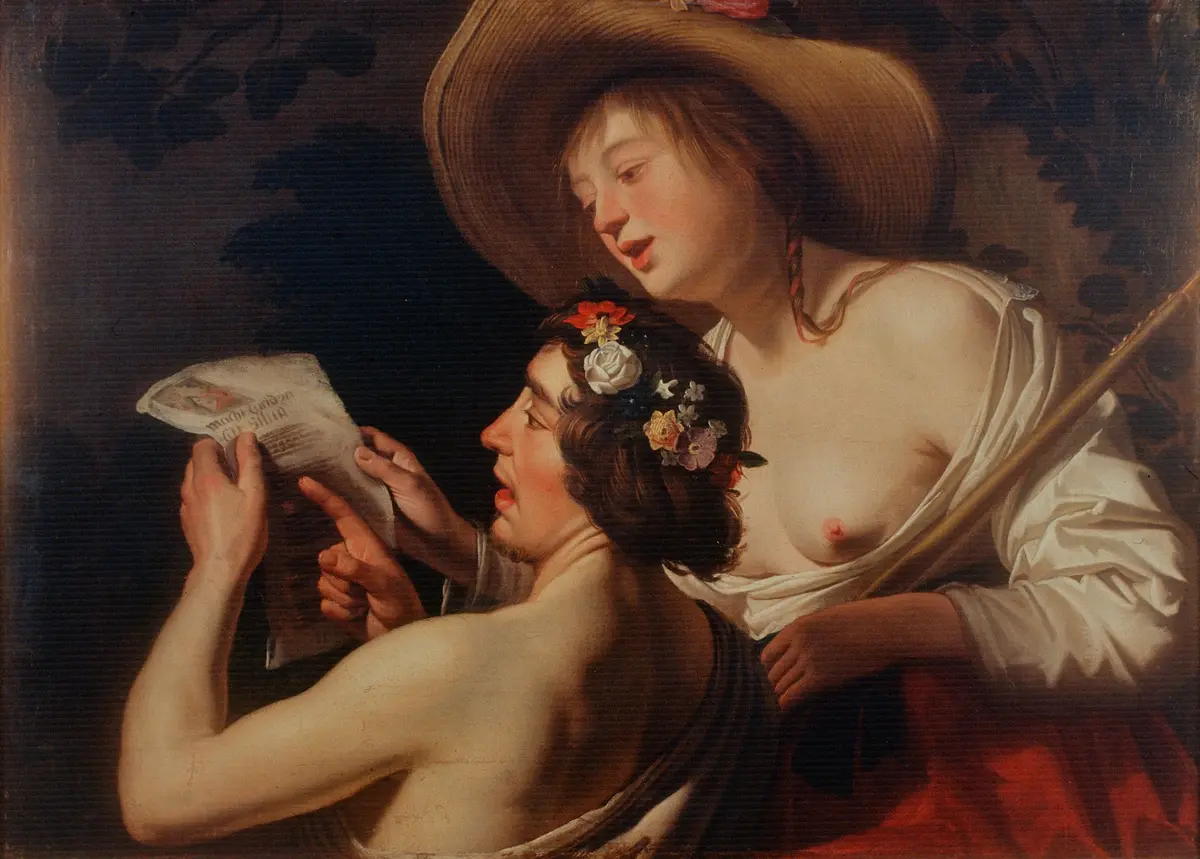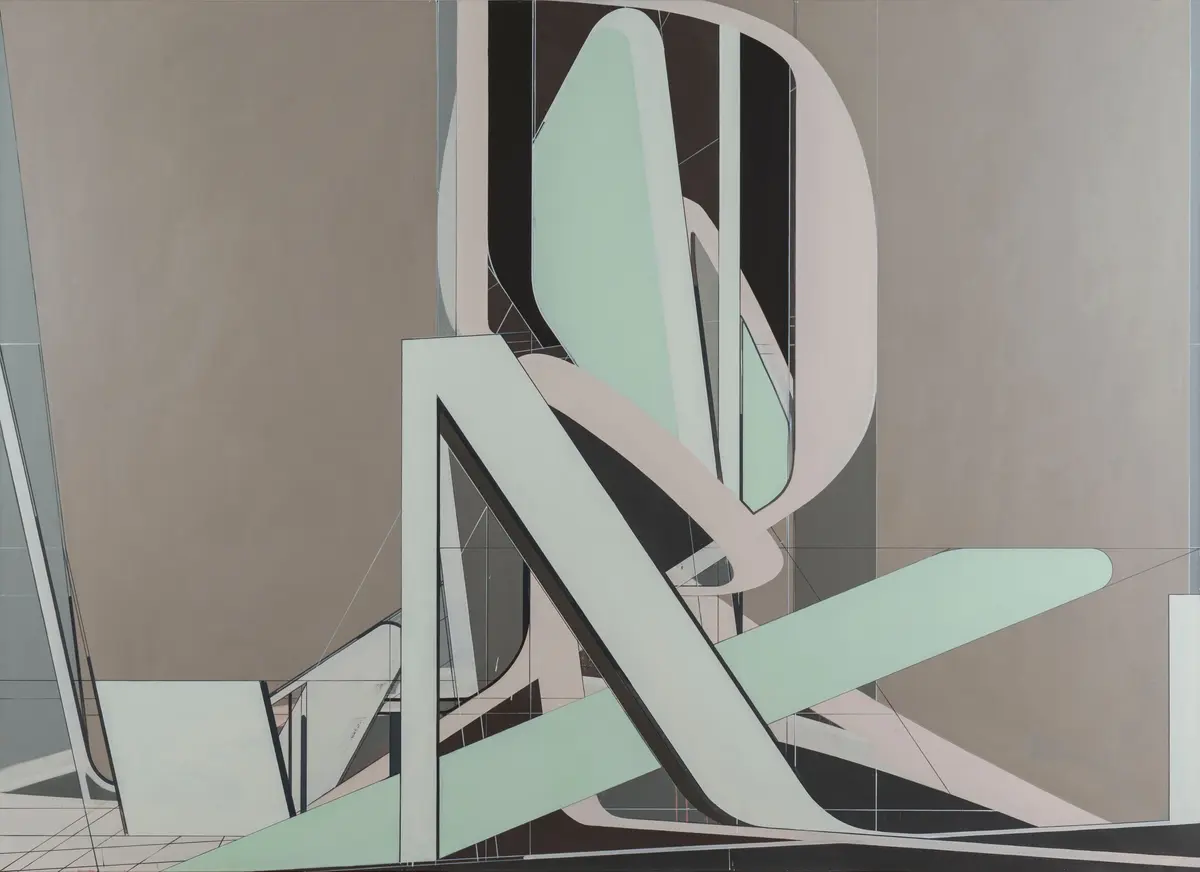The Collection of the Von der Heydt-Museum
With world-famous works of Dutch painting and of the 19th century, with paintings by Claude Monet, Franz Marc, Ernst Ludwig Kirchner and Otto Dix, Pablo Picasso and Francis Bacon, the Von der Heydt Museum is one of the internationally renowned art institutions in Germany. More than 2,000 paintings, 500 sculptures and 30,000 graphic sheets are part of the collection, which is presented in changing large exhibitions.
THE EARLY 20TH CENTURY
The diversity of styles developed internationally by different groups of artists is what makes the museum so rich today: The works of the “Nabis” group, to which Paul Sérusier, Pierre Bonnard and Edouard Vuillard belonged, are contrasted with the “Fauves”, represented in the collection by André Derain, Maurice de Vlaminck and Kees van Dongen. The artist groups “Brücke” and “Blauer Reiter” are synonymous with Expressionism of the years 1905 to 1914. With works by Ernst Ludwig Kirchner, Karl Schmidt-Rottluff, Erich Heckel, Max Pechstein, Emil Nolde and Otto Mueller, the painters of the “Brücke” form a focal point of the collection.
In 1909, the “Neue Künstlervereinigung München” was founded. The painter Adolf Erbslöh, who came from Wuppertal, was one of the founding members. The first exhibitions of his comrades-in-arms, who founded the “Blaue Reiter” a short time later, in the museums in Barmen and Elberfeld are thanks to his mediation. Alongside Marc’s “Blue Fox”, two paintings by Kandinsky and one each by Gabriele Münter and Marianne von Werefkin, Jawlensky’s “Girl with Peonies” and “Black Eyes” are among the best-known works in the collection today.
Pablo Picasso’s “Acrobat and Harlequin” (1905) was the first painting by the Spaniard in a public collection in 1911, but was confiscated by the National Socialists and later sold, so that it no longer belongs to the museum today. On the other hand, five important works by Picasso are now part of the collection, including “Man with Tippet” (1900), an early self-portrait.
Franz Marc, Fox, 1911 © Von der Heydt-Museum
BETWEEN THE WORLD WARS
The First World War had left deep psychological and physical wounds. Oskar Kokoschka’s impressive “Self-Portrait” reflects the mood of the times. On the other hand, the technoid forms of Fernand Léger, by whom the collection includes three paintings, as well as the famous painting “Simultaneous Vision” by the Futurist Umberto Boccioni, give an idea of the painters’ new fascination with modern technologies. Cubism is represented in the collection with central works by Picasso (“Harlequin Family”), Juan Gris (“Pierrot”), André Derain (“Still Life with Hat and Vessels”) and Jean Metzinger (“Still Life”).
Lyonel Feininger, of whom the museum owns two paintings, and Oskar Schlemmer, were teachers at the “Bauhaus” school in Weimar. When the National Socialists banned Schlemmer from any artistic activity, the Wuppertal paint manufacturer Dr. Kurt Herberts offered him new work opportunities in 1940. With four paintings and more than 300 drawings, the Schlemmer collection is now a main focus of the collection.
Max Ernst discovered new techniques for tracing the unconscious in 1925. The museum owns two characteristic paintings from his Paris phase: “Gulf Stream” and “Two Anthropomorphic Figures”. Another representative of Surrealism, Salvador Dalí, is represented in the collection in “The True Image of Arnold Böcklin’s Isle of the Dead at the Hour of the Angelus”.
Umberto Boccioni, Simultaneous Visions, ca. 1912 © Von der Heydt-Museum
NEW OBJECTIVITY, DIX AND BECKMANN
Among the most vehement advocates of socially critical realism in the 1920s were Otto Dix, George Grosz and Conrad Felixmüller, all of whom are very prominently represented in the collection. In the course of the “New Objectivity”, the portrait gained a central importance. In the collection of the Von der Heydt Museum, this is documented not only by Jankel Adler’s melancholy depiction of Else Lasker-Schüler, but above all by Dix’s whimsical portrait of the Wuppertal jeweller Karl Krall. With biting derision, Georg Scholz denounces the sated complacency and bigotry of the peasants in his painting “Industrial Farmers”.
Alongside this, a softened classicist style of New Objectivity developed, including the mysterious cityscapes of Franz Radziwill. The alienation of reality was similarly pursued by the Elberfeld painter Carl Grossberg, whose main theme was the modern industrial world. In his Wuppertal paintings, Grossberg transformed banal views of cities and machines into magical apparitions.
With nine paintings and 110 works on paper, the oeuvre of Max Beckmann forms another manin focus in the collection of the Von der Heydt Museum. In addition to his socio-critical work of the 1920s, his large, densely packed figure compositions from his late period are particularly well known.
Max Beckmann, Large Variety with Magician and Dancer, 1942 © Von der Heydt-Museum Wuppertal
THE 19TH CENTURY IN GERMANY
The collection of the Von der Heydt Museum includes landscapes by Jacob Philipp Hackert, Carl Blechen, Joseph Anton Koch, Oswald Achenbach and Carl Rottmann. Another focal point of the very extensive collection of 19th-century paintings are the works of the Düsseldorf artist Heinrich Christoph Kolbe, who portrayed the upper middle classes of Wuppertal. From the Munich “Leibl circle”, the painters Wilhelm Trübner, Carl Schuch, Johann Sperl and Hans Thoma are represented in the collection alongside Wilhelm Leibl, as are the three most important “German Romans” Arnold Böcklin, Anselm Feuerbach and Hans von Marées.
The most important trends of modernism around 1900 in Germany are presented by works by Paula Modersohn-Becker (the collection includes more than 20 paintings by the artist), the German Impressionists such as Max Liebermann, Lovis Corinth, Max Slevogt and Walter Leistikow. With five of his best-known paintings, Edvard Munch is also one of the outstanding painters of this period in the collection.
Hans Thoma, Flora with Putto by the Water, 1881, © Von der Heydt-Museum Wuppertal
THE "SCHOOL OF BARBIZON" AND IMPRESSIONISM
The collection of the Von der Heydt Museum includes works by the so-called “School of Barbizon”, by Henri Rousseau, Jules Dupré, Charles-Francois Daubigny, Narcisso Virgilio Díaz de la Pena, Constant Troyon and Jean-Baptiste Camille Corot, as well as by Gustave Courbet, who are regarded as forerunners of Impressionism. Edouard Manet’s “The Fisherman” and Paul Cézanne’s “The Hermitage in Pontoise” exemplify the further development of French art. With three landscapes by Claude Monet, Alfred Sisley’s “Le canal du Loing”, Paul Signac’s “Sailboats in the Port of Saint-Tropez” as well as works by Camille Pissarro, Edgar Degas, Auguste Renoir and three important early works by Vincent van Gogh, the Impressionists form a focal point of the collection.
Claude Monet, View of the Sea, 1888 © Von der Heydt-Museum Wuppertal
FLEMISH AND DUTCH LANDSCAPE AND GENRE PAINTING
The Von der Heydt-Museum Wuppertal has one of the richest public collections of Dutch art of the 16th and 17th centuries in North Rhine-Westphalia. It includes 60 paintings alone, among them high-ranking works by Aelbert Cuyp, Jan van Goyen, Joos de Momper, Pieter Neefs the Elder, Jacob van Ruisdael, Herman Saftleven III and Frans Snyders. The museum is also broadly represented in the field of graphic art, with works by Hendrick Goltzius, Nicolaes Berchem, Cornelis Dusart and Rembrandt, to name but a few. With few exceptions, the paintings have come to the museum through donations.
Jan van Bijlert, Singing Shepherds, 17th century © Von der Heydt-Museum Wuppertal
ART AFTER 1950
The municipal museum of Wuppertal was already regarded as decidedly progressive in the first post-war years. A work by Willi Baumeister, who, like Oskar Schlemmer, worked in the laboratory of the Wuppertal paint manufacturer Kurt Herberts during the National Socialist era and is today considered the father of German abstract art, was purchased as early as 1947. And Joseph Beuys exhibited here as early as 1953. The Wuppertal Parnass Gallery (1961-1965) also played an important role in the development of informal painting as well as in the emergence of Fluxus and Happening. With early purchases of paintings from the circle of Informal painting, by Ernst Wilhelm Nay, Emil Schumacher, Karl Otto Götz, Rupprecht Geiger and Fritz Winter, the museum’s progressive collecting activities oriented towards the contemporary avant-garde continued. Jean Dubuffet, Lucebert, Asger Jorn and Georges Mathieu stand for its international orientation.
In addition to the Zero artists Otto Piene, Heinz Mack, Adolf Luther and Lucio Fontana, the German variant of Pop Art, as presented by Richter, Polke and, in a very unique way, Konrad Klapheck, also found its way into the collection. Representatives of conceptual painting, who concentrated on the analysis of their painting materials, were also acquired. Among them are Raimund Girke, Ulrich Erben and Kuno Gonschior – complemented in the collection by works by the Americans Marcia Hafif, Joseph Marioni and the Irishman Sean Scully.
Ernst Wilhelm Nay, With White Rhombs, 1954, Von der Heydt Museum © VG Bild-Kunst, Bonn 2021
CONTEMPORARIES
Supported by the Renate and Eberhard Robke Foundation, numerous works of contemporary art have been acquired in recent years, including works by Tony Cragg, Per Kirkeby, Cornelius Völker, Frank Nitsche, Corinne Wasmuth, Tatjana Valsang, Driss Ouadahi and others.
Frank Nitsche, NOT-17-2006, 2006, Kunst- und Museumsverein im Von der Heydt-Museum Wuppertal © Frank Nitsche
The sculpture collection comprises about 500 sculptures of the 19th and 20th centuries. The monumental sculpture “Striding Man” by Auguste Rodin was acquired as early as 1910. Through August von der Heydt, Constantin Meunier’s “Ecce Homo”, Rodin’s “Portrait Bust of the Sculptor Falguière”, Wilhelm Lehmbruck’s “Tilted Woman’s Head” and several works by Bernhard Hoetger entered the collection. His son Eduard von der Heydt also donated numerous sculptures to the museum in the 1940s and 1950s, with the exception of Edgar Degas and Maurice Sarkissoff, mainly by German sculptors and sculptresses, including Renée Sintenis, Klinger and Lehmbruck.
But new abstracting and abstract works, such as “Head in Mahogany” by Rudolf Belling and “Striding” by Alexander Archipenko, also found their way into the museum collection. The acquisition of works by Reg Butler, Alexander Calder, Lynn Chadwick and Henry Moore from the 1950s as well as more recent works by Tony Cragg, Anthony Caro, Donald Judd, George Segal and Maurizio Nannucci reflects the international development in the field of sculpture. In 1974, the museum also received five sculptures by Hans Arp, created between 1933 and 1961, as a gift. Another focus of the sculpture collection is on the art of the 1960s, with numerous works by artists from the Zero Group – such as Lucio Fontana, Nicolas Schöffer and Günther Weseler.
Auguste Rodin, Striding Man, 1900 © Von der Heydt-Museum Wuppertal
The spectrum ranges from the Renaissance to the present. One focus is on Albrecht Dürer and his contemporaries as well as the Dutch of the 17th century. Another focus is on the graphic works of German artists of Classicism and Romanticism. Among them are 41 drawings as well as the “Neapolitan Sketchbook” by Hans von Marées, born in 1837 in (Wuppertal-) Elberfeld. Also to be discovered are works by German Expressionists, above all the artists of the “Brücke”, as well as extensive collections by pioneers of Modernism – Max Klinger, Max Liebermann, Lovis Corinth and Max Beckmann.
Until 1964, Eduard von der Heydt’s donations added exceptional works of French art by Paul Cézanne, Edgar Degas, Claude Monet, Georges Seurat, Alfred Sisley, the young Pablo Picasso and Marc Chagall. The treasures also include twelve drawings and watercolours by Paul Klee.
Rembrandt, Self-Portrait with Feather-adorned Beret, Arm in Front of Chest, 1638 © Von der Heydt-Museum Wuppertal
With around 700 works by more than 50 artists spanning a period of around 100 years, the Von der Heydt Museum owns an exciting and multifaceted photographic collection ranging from Man Ray, Hugo Erfurth, August Sander, Karl Blossfeldt or Florence Henri to Wols, Peter Keetman Jan Dibbets and Guido Jendritzko to photographic works by contemporary artists such as Klaus Rinke, Bernd and Hilla Becher, Ursula Wevers and Bettina Pousttchi.
Bettina Pousttchi, Parachutes, 2006, Von der Heydt-Museum Wuppertal © Bettina Pousttchi












